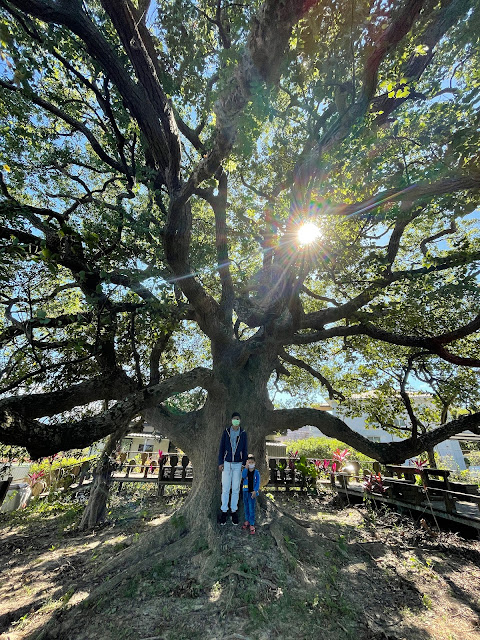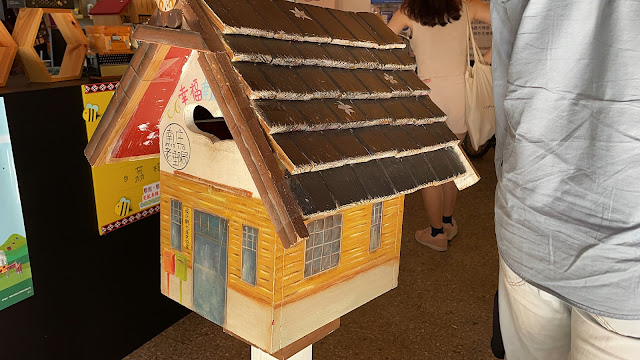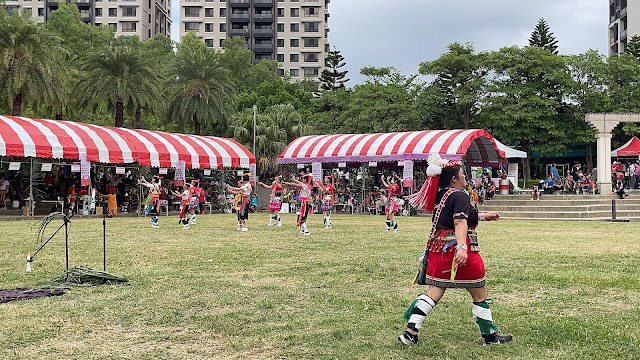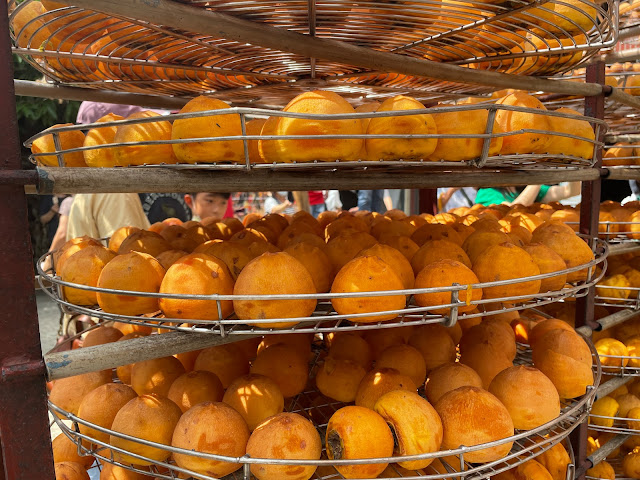It has been 3 years since we were here last time. We were driving around the reservoir and decided to venture deeper into the mountains as the weather was nice that day. Along the way, we also came across some 100-year-old trees. Originally, our plan was to find an oak tree as I wanted to gather some acorns, but unfortunately, we couldn't locate the exact spot. From a Facebook post, we only knew it was near one of the temples, but despite driving around the area, we couldn't spot the tree we were looking for.
Yongheshan Water Reservoir (永和山水庫)
The construction of Yongheshan Reservoir began in July 1980 and was completed in October 1984.
Century Years Old Camphor Tree (百年公婆樹)
Locating the tree wasn't easy, but luckily, we encountered some people walking back, and they guided us to the camphor tree. There is a pathway between buildings that leads to the camphor tree.
Nanzhuang Old Street (南庄老街)
Nanzhuang Old Street is located in Miaoli County. The local residents are predominantly Hakka people. With a strong Hakka nostalgic flavor, it attracts many tourists during holidays. The main attractions include Yongchang Temple, Old Post Office, Nogizaki, Osmanthus Lane, and Washing Pit. The traditional old street is centered around Zhongzheng Road, with numerous businesses on both sides. Nanzhuang's development dates back to the Qing Dynasty, and during the Japanese era, it was a mining area for camphor and coal. Following the severe damage caused by the 1935 earthquake, the Japanese were commissioned to plan the reconstruction project, resulting in the landscape of two-story Japanese-style wooden buildings on both sides of Zhongzheng Road. Osmanthus Lane originally referred to a noodle shop at the mouth of an alley on Zhongzheng Road. Through intentional efforts by the local government and business owners, the lane and its surroundings have become a well-known "Osmanthus Lane Community," gradually replacing Zhongzheng Road and becoming a familiar spot for tourists.
Nanchuang Culture Hall / Old Post Office (南庄文化會館 / 老郵局)
The Nanzhuang Post Office was built in 1900 and still retains the architectural style of the Japanese occupation period. It holds historical significance and value. The building was reconstructed after the 1935 earthquake in central Taiwan. The telecommunications bureau had two flagpoles, and the telecommunications and post offices took turns raising and lowering the flag, which was quite interesting. In 1972, the telecommunications bureau moved out, and in 1985, the post office followed suit. After the old post office became vacant, it served as a rural nursery school, Nanzhuang Cultural Hall, and a classroom for the Air University.
Dongcun Dormitory Group (東村宿舍群)
The Dongcun dormitory group retains its original appearance, and the outdoor area is designed as a Japanese-style courtyard. Services such as kimono experience, coffee afternoon tea, and Japanese-style homestays are available. Zhong Qiuyun, the dormitory manager of Nanzhuang East Village, mentioned that the building has a history of over 80 years. The dormitory was built in 1935 and experienced the Guandaoshan earthquake before reopening in 1940. During the Japanese era, Nanzhuang's camphor industry thrived, and many Japanese people lived here. The Dongcun dormitory group was originally the staff dormitory next to the camphor industry. It was later handed over to the Forest Service and used as a dormitory for rangers. Eventually, the Sanshan National Scenic Area Management Office took over the house, completed repairs, and opened it to the public at the end of 2021.















































